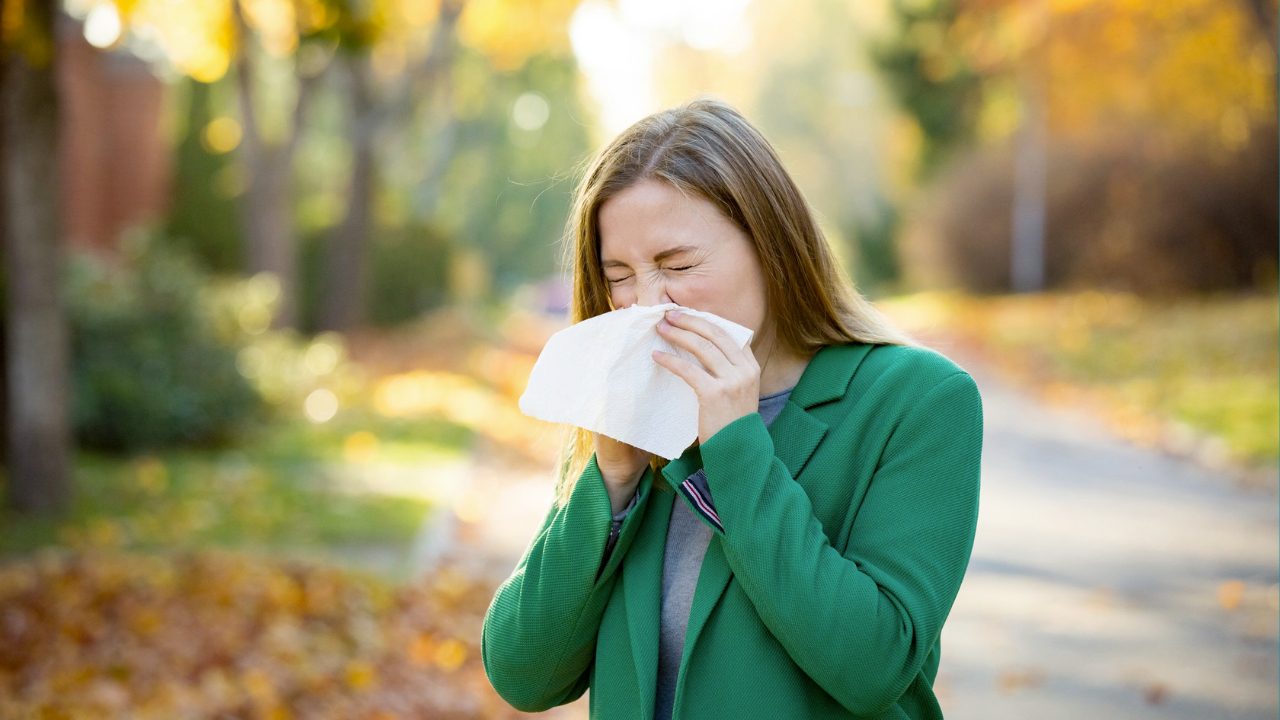In recent years, the impact of climate change on our planet has become increasingly evident, affecting various aspects of our lives, including our health. One such health concern that has received maximum attention is the exacerbation of allergic rhinitis, a common condition characterized by sneezing, runny or stuffy nose, and itchy or watery eyes. While allergic rhinitis in the United States has been a persistent issue for many individuals, the changing climate is now playing a significant role in intensifying its prevalence and severity.
The present article discovers the delicate relationship between climatic changes and allergic rhinitis, addressing issues like the impact of rising temperatures, extended pollen seasons, and altering environmental patterns on the recent hikes in the number of patients suffering from allergic rhinitis in the USA.
Spreading awareness about this connection is not only essential for people suffering from allergic rhinitis but is also important for policy developers and medical professionals who are looking for solutions to reduce its influence on the public health domain.
Which Climatic Factors can be considered responsible for Allergic Rhinitis?
According to researchers, the respiratory illnesses like allergic rhinitis and asthma are increasing due to the below-mentioned causes:
- Certain food items
- Pollen grains
- Fungus
- Dust mites
- Animal Dander
- Impact of Urbanization
- Climatic changes
These climatic factors are responsible for allergic rhinitis but the condition that is mainly influenced by the change in climate is pollen grains and we will discuss it in finer detail in the article.
What are Pollen Grains?
Pollen grains, or the male reproductive part, are one of the leading components of the aeroallergen load. The incidence of pollen grain allergies has been on the rise in recent years due to changing climatic conditions. Pollinosis or pollen allergy is the cause of allergic response, which is regarded as a global health concern. Moreover, pollen is also linked with non-allergic respiratory illnesses like COPD, stroke, and even MI.
The air quality is deteriorating as a result of industrial pollution, vehicular traffic, fossil fuel, and domestic use. The impact of these climatic changes has a negative impact on agricultural crop production, diversity, and biological patterns like flowering time and pollination.
The researchers have found that during a particular season, when there is a spike in pollen grains and if the air is mixed with a lot of traffic exhaust particles that combine with pollen, then the allergies get even worse as it stimulates the immune system and creates more aggressive symptoms.
When pollen is released, our bodies can mistake it as a dangerous product and produce chemicals to fight against it, which has symptoms such as sneezing, wheezing, watery eyes, and congestion.
Has the Incidence of Pollen Grains Increased in Recent Years?
The pollen season has increased by 20 days since 1900, and the concentration of pollen grains has also increased by 21% over the last three decades. The maximum changes are observed in the Midwest and Texas. Climate models show that pollen season can become even worse by the end of the century with high greenhouse gas emissions.
The north U.S. will experience more changes than the south due to more alterations in the temperature and also due to different tree species in other regions. The southeast region will experience increased production of pollen grains as the pollen-generating oak and Cyprus trees are in higher concentration in these regions.
What are Climatic Changes?
Climatic change has threatened the advancement made in the public healthcare segment in the past 50 years. The allergenic precursors are crucial in identifying the factors towards the incidence and prevalence of allergic diseases, while climatic change impacts the levels and location of these aeroallergens.
Extreme weather conditions like heat, drought, heavy rainfall, floods, and cyclones influence natural ecosystems and agricultural productivity, impact the health of individuals, and, in turn, result in diseases.
What are the Risk Factors for Respiratory illness in the USA?
The risk factors that culminate in respiratory illnesses are occupational agents, indoor pollution from cooking fuel, tobacco smoke, air pollutants from traffic, fossil fuel combustion, and aeroallergens like pollen, fungal spores, insects, and biological debris.
Incidence
As per the current estimates, one in seven Americans suffers from Allergic Rhinitis, which is one of the leading allergic illnesses in the country. In India, 26% of individuals have allergic rhinitis. The proportion of the number of cases may vary between and within the nations due to regional variations in the kind and strength of various allergens.
What are the Challenges?
The controllable and preventable factors pose a severe threat to Americans as the measures implemented by government bodies are not sufficient despite the availability of evaluating the status and health influence documents of these diseases by international organizations like WHO.
Allergies are Becoming Worse – Climatic Change to Blame
According to a report, people are having more intense allergy seasons due to climatic change. Climate change can impact allergy season in a number of ways, as many trees and plants need a specific degree of sustained warmth to trigger budding.
The warmer winter season has caused them to accumulate needed heat quickly, and this results in a condition where the trees bloom earlier and for extended periods. The average temperature of winter has increased by 3 degrees Fahrenheit in the eastern U.S. since 1970. Moreover, as the level of carbon dioxide is also growing, it can lead to supercharged photosynthesis so that more pollen is generated.
To find out which platform best suits your unique requirements and preferences, compare Curex vs Wyndly and consider their features, advantages, and user reviews.
Conclusion
As climate change continues its relentless advance, the evidence linking it to the exacerbation of allergic rhinitis in the United States grows stronger. The intricate interplay between rising temperatures, shifting pollen seasons, and altered environmental conditions is creating a perfect storm that affects the lives of millions of allergy sufferers.
In this article, we’ve explored how climate change is not only intensifying the symptoms of allergic rhinitis but also expanding the geographic reach of allergies. Traditional allergy hotspots are spreading, and new regions are experiencing the burden of allergic rhinitis for the first time.
Ultimately, the fight against the worsening impact of allergic rhinitis in the face of climate change is a collective endeavor. It requires the collaboration of scientists, policymakers, healthcare professionals, and the public to treat allergic rhinitis in the USA. By acknowledging this critical connection and taking proactive measures, we can hope to alleviate the suffering of allergy sufferers and create a healthier, more sustainable future for all.











